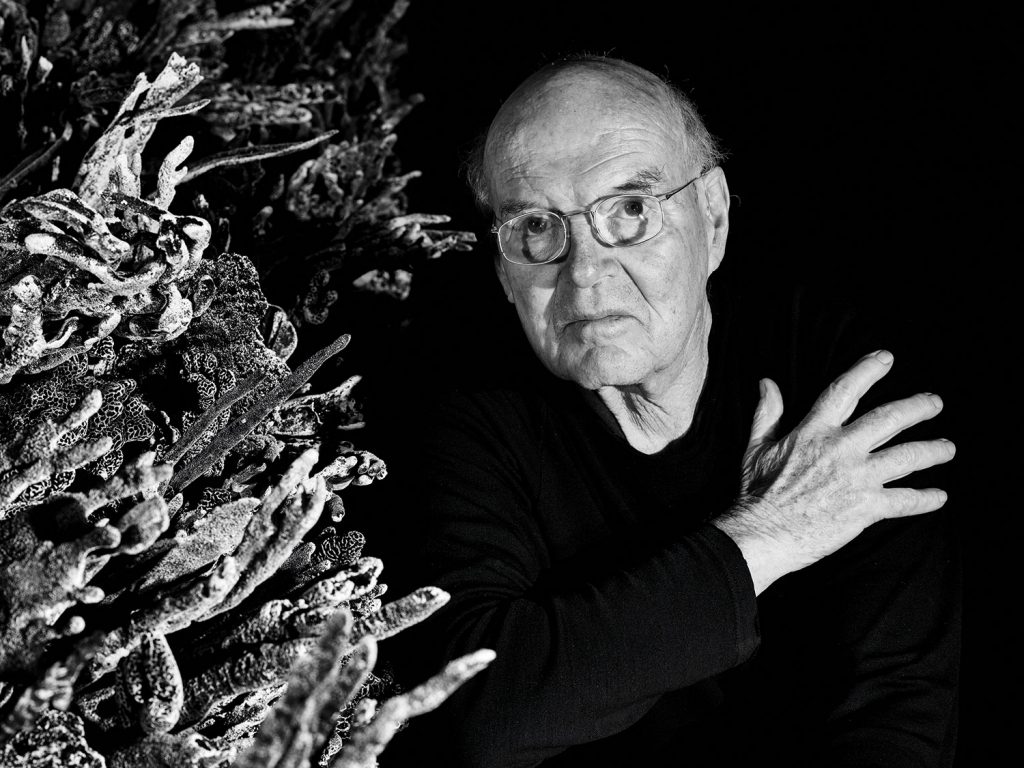Every three months for the past 40 years I’ve visited my good friend the great artist Asher Bilu to get a fix – art fix, that is. He’s always got something new that takes me on a journey. Asher’s now into his 80s, but is brighter, stronger and more energetic than any young pups in the art world today. To me he’s the greatest living artist, his only match in history Van Gogh. Both worked with extraordinary passion, commitment and vision, never failing to deliver the goods. Poor old Vincent lasted only 37 years; fortunately, Asher’s given us another forty-plus, with more to come.
So last Monday I arrived at lunchtime. Asher always insists on making lunch before we visit the studio; it’s part of the performance. Luckily for me, he’s the Penn and Teller of the kitchen. No one else could take one lettuce leaf, a few remnants from the bottom of the fridge door, grab a handful of herbs and spices, then magically produce a three-metre-high exotic salad full of every unfamiliar food and flavour in the world – at least, unfamiliar to me – and deliver it with his knowing, confident warm grin. I always feel a little guilty hoeing in to this foreign splendour. It’s almost like burning books, destroying what appears to be more art than food.
After the third helping I got over my guilt. Relaxed, I noticed three weaver-bird nests hanging from the ceiling.
Where did you get those from, Asher?
‘They were a gift from a villager in Cambodia, a beautiful man.’
How perfect they were: woven from thin flexible green grass stalks, then allowed to dry and set. It’s mind-blowing that a small fine-feathered creature, supposedly bird-brained, could construct such a perfect structure without the aid of a computer and 3D printer. I doubt, even with all our scientific knowledge and expertise, we could even get close. How marvellous and complicated nature really is when you have a good look.
That’s the thing about Asher’s house: it’s always full of surprises and discoveries. He’s a human bower bird, collecting everything extraordinary he sees, and would bring home the Milky Way if he could.
At last Asher ushered me into his studio gallery. Dimly lit, with a shiny black-glazed floor looking more like a lake, the walls lined with giant paintings and with the brightly glowing beast of a sculpture in the middle of the room. Being so overwhelmed with awe I was compelled to take my shoes off before venturing further. He called it ‘resurrection’: a five-metre-long, highly polished glass-like, sharp-edged black plinth supported a striking, organic coral-like creature. These two parts, so in conflict with each other, were cleverly married together by the reflection of the one into the other – a symbiotic relationship.
Natural sea sponge, acrylic polymer paint,
bamboo armature, wood, perspex.
Plinth size: 122 x 480 x 40cm, Sponges: height 60cm
Asher had already started my fix; he’d got me tripping. Was the plinth man-made, or a recently discovered giant perfect crystal, an expression of all of nature’s dependence on mathematics? It could have arrived from another planet – who knows? It exuded a mood of quiet but strong stability and reverence. Maybe it was a shrine to the universe.
The black and white multi-shaped organism on top with its billions of oxygen-breathing holes evoked a museum diorama, but projected much more. It could have arrived from twenty thousand leagues under the sea; more likely, from a galaxy 20,000 light years above the sea, perhaps beamed down and reconstructed using an atomic time travel vortex. Asher’s obsessive interest and great knowledge of space, science and every living creature and their complete interconnection is on full display with ‘resurrection’.
As I walked along, eyes marvelling at every conceivable shape he had created, I wondered if this creature could even be the source of our mitochondria.
A few months back, visiting Eden in New South Wales, Asher was walking along the beach where tons of kelp and thousands of sponges had been washed up after a storm. There is no one else in the world who could pick up one of these sponges, stare and dream into it and finish up with ‘resurrection’.
It was back in 1971 in a dry red dusty paddock inland at Jerilderie that Asher noticed an out-of-place five-centimetre rock. He picked it up and, with eyes wide open and the excitement of a teenage boy getting his first kiss, pointed out to me the pattern in every dot and crevice. He opened my eyes, and I’ve kept on looking. Thanks Asher.



Comments are closed.